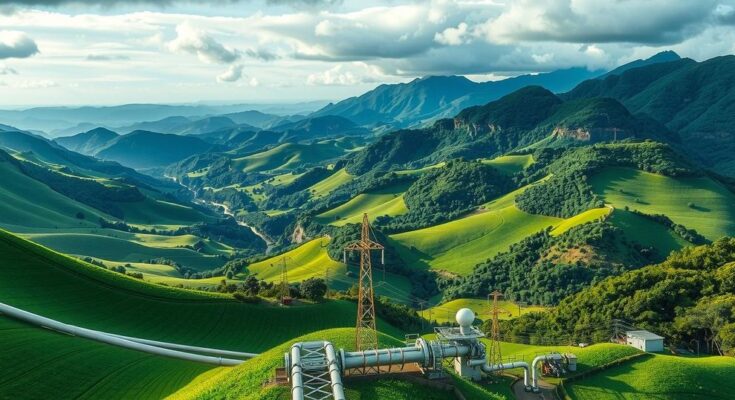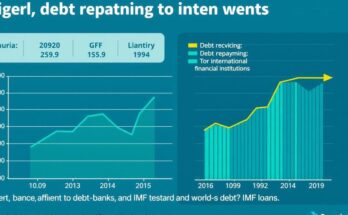Fitch Ratings warns of escalating energy costs in Colombia, attributed to reliance on imported natural gas amid declining domestic production. The regulatory framework permits cost transfer to consumers, while rising prices may pressure the economy. With dwindling gas reserves and rising retail prices, significant investments are made to enhance infrastructure and manage supply challenges.
Colombia is poised to experience rising energy costs in the upcoming years, primarily driven by an increasing dependence on imported natural gas. Fitch Ratings highlights this shift as necessary to accommodate growing demand alongside declining domestic gas production. The regulatory structure permits energy companies to transfer these elevated costs onto consumers, but the political landscape may create pressures as the economy grapples with these challenges.
Although hydroelectric power predominantly contributes to Colombia’s electricity generation, gas-fired electricity remains essential for baseload supply, especially during droughts and peak demand periods. Historically self-sufficient in natural gas, Colombia’s imports surged to nearly 20% of consumption in 2024 due to inadequate hydroelectric outputs, domestic production issues, and regional discrepancies.
Industry experts anticipate that the natural gas deficit will continue to expand, predicting that domestic production will only fulfill 88% of projected consumption by 2025, decreasing to 70% in 2026. To address these challenges, Colombia’s principal gas transporters, including Transportadora de Gas Internacional S.A. and Promigas S.A., are significantly investing in infrastructure to facilitate the increase in gas imports and enhance connectivity within the nation.
The rise in retail gas prices has been notable, with Vanti implementing a 36% increase in Bogotá in February 2025 and Empresas Públicas de Medellín raising prices by 21% in Medellín. Other distributors such as Gases del Caribe and Surtidora de Gas del Caribe have managed to maintain domestic supply and control price adjustments by utilizing resources from smaller fields in northern and southwestern Colombia.
Colombia’s proven gas reserves are dwindling, with estimates suggesting only six years of supply availability by 2025 at the current production rate of 965 giga British thermal units per day. The leading gas producers, Ecopetrol and Canacol Energy, have reported declining output, with significant drops at key production fields.
This decline in production is influenced by geological constraints and government policies that inhibit investment in the oil and gas sector. In 2023, Colombia became the first Latin American nation to endorse the Fossil Fuel Non-Proliferation Treaty, further announcing a halt on new oil drilling and exploration contracts.
The regulated tariffs system allows gas distributors to pass supply costs onto consumers. However, increasing energy prices may amplify the working capital requirements and escalating political pressures faced by energy companies along the supply chain. Despite regulatory protections for margins, Columbia’s electricity distribution sector is under financial stress due to rising prices, political interventions, and restrictions on tariff increases mandated by local regulators during the pandemic.
In summary, Colombia is poised for heightened energy costs driven by a growing reliance on imported natural gas, alongside a decline in domestic production. With ongoing investment in infrastructure and rising retail prices, the energy sector faces significant financial pressures. The blend of regulatory frameworks and political landscape will play a crucial role in shaping the future of energy costs and supply sustainability in Colombia.
Original Source: www.financecolombia.com




